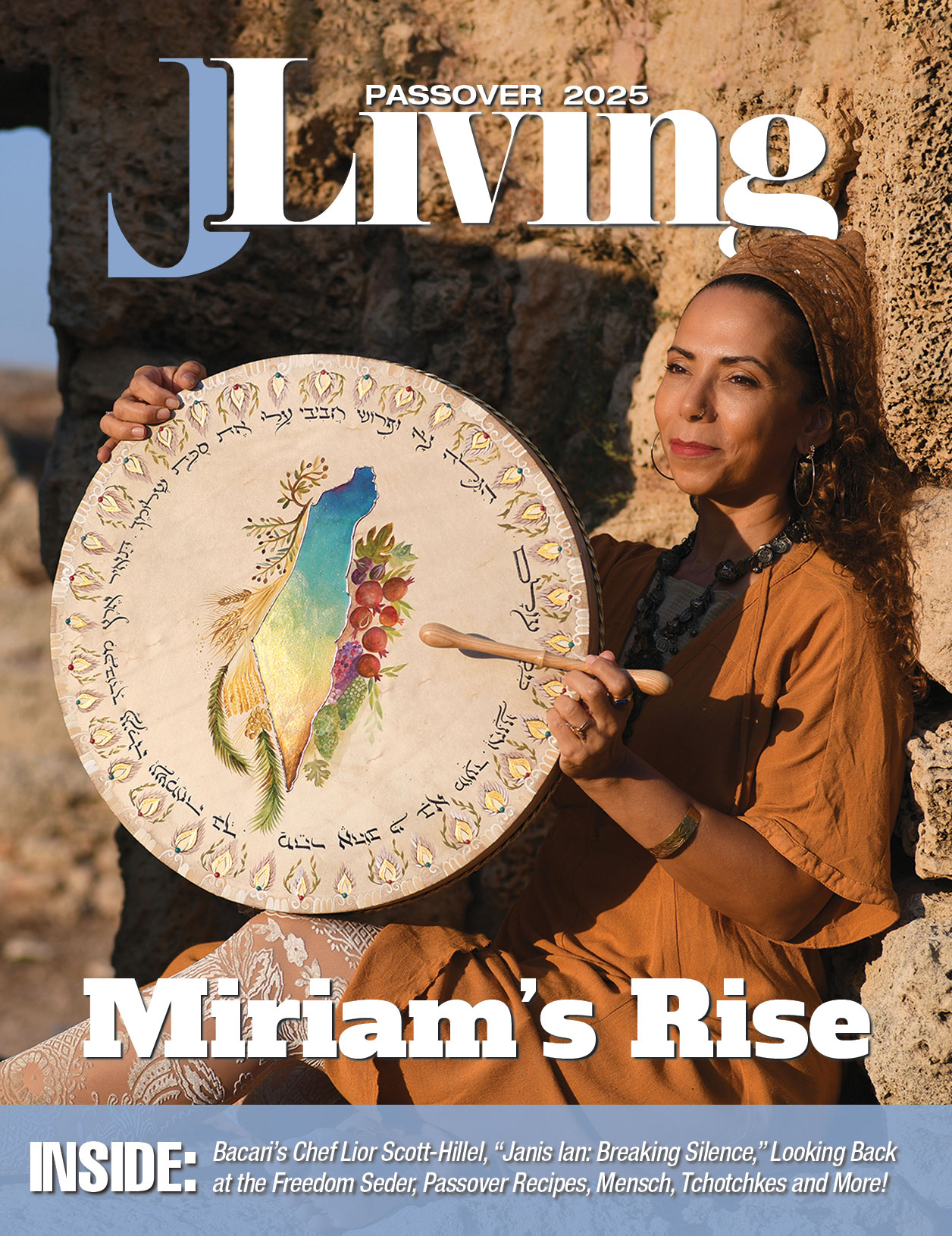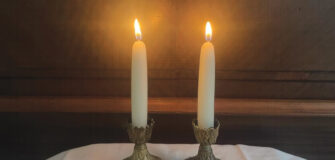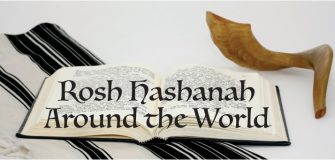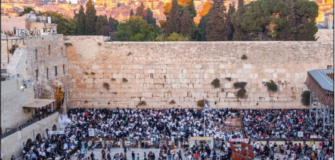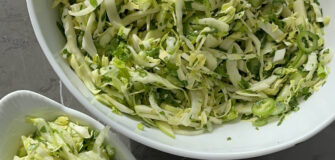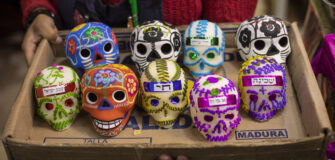Mishegoss – The Lulav and Etrog
Shaking the Lulav and Etrog
Leviticus 23:40: “On the first day, you shall take the product of hadar trees, branches of palm trees, boughs of leafy trees, and willows of the brook, and you shall rejoice before the Eternal, your God, for seven days.”
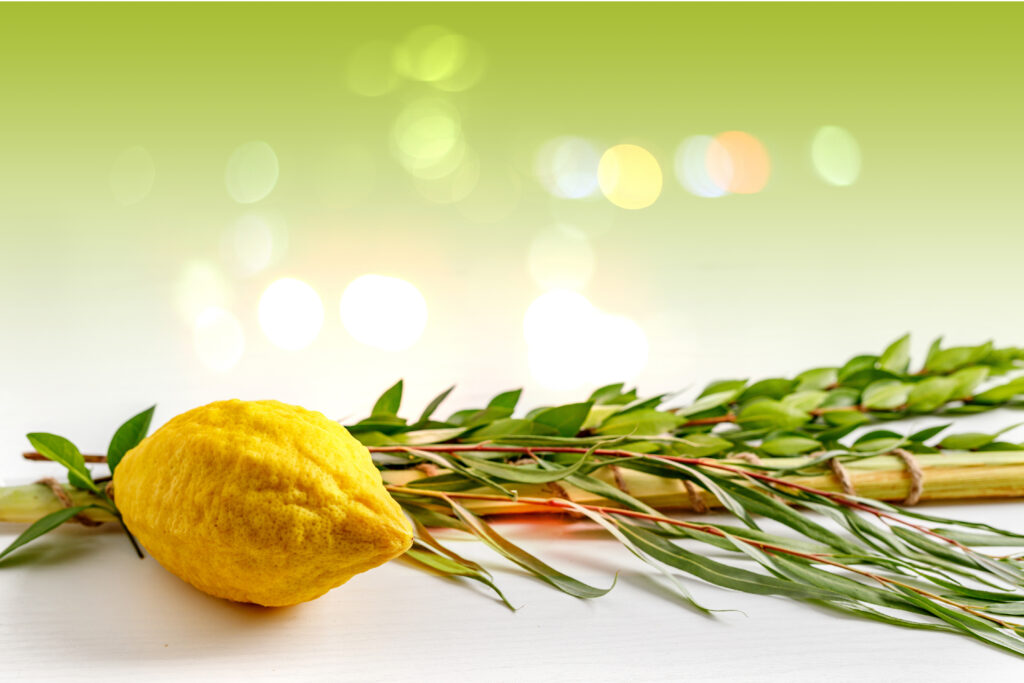
The Arba’ah Minim
The Arba’ah Minim literally is the four species mentioned in Leviticus. The product of the hadar trees is the etrog, the branches of the palm trees are the lulav, the boughs of leafy trees are the myrtle (or hadasim), and the willow branches are the aravot.
The Torah does not say how many of each we need, but our tradition is for one etrog, one palm branch, three sprigs of myrtle and two willow branches. The four species are then held together with the myrtle on the right of the palm branch and the willow on the left. The spine of the palm should be facing the holder. Many people hold the three species tied together in the right hand, while the etrog is in the left hand.
There are a number of explanations as to what these four species signify. One theory is that they represent the human body — the palm is the spine, the myrtle is the eyes, the willow is the lips, and the etrog is the heart. Bringing them together relates to us using our whole body for mitzvah.
Another common explanation is that each species represents a type of Jew based on the species’ taste and smell. Taste represents earning, while smell represents good deeds. The palm has a nice taste and no smell, the myrtle has smell and no taste, the willow has neither taste nor smell, and the etrog has both. This symbolism shows us that despite our differences, we all come together as a community.
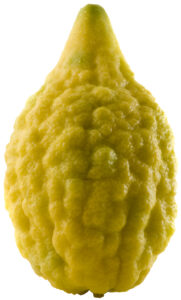
What is an Etrog?
The etrog can be traced back to the Yunnan province in southwest China and was brought to India as it was used in medicine. The fruit then was found in India and was often used as a fertility drug due to its high number of seeds. The Etrog made its way to Jerusalem as a prized erotic fruit after the Persian ruler Darius the Greatconquered India in 518 BCE.
The etrog resembles a bumpy or warty lemon. The fruit has a thick rind with aromatic skin and has more seeds than pulp. Unlike most other fruits, it does not spoil. Instead, it just shrivels over time. During Sukkot, you can candy the fruit by boiling it with some sugar for a nice, sweet treat. Did you know that a midrash suggests that the etrog, not the apple, was the original forbidden fruit in the Garden of Eden? In Genesis 3:6 it is written that “the tree was good for food,” and the etrog tree is a rare tree where the wood also tastes like its fruit, leading many to conclude that this is the tree cited. To further make the case, the Etrog was often called Adam’s apple or paradise apple.
Where does my Etrog come from?
While etrogs are primarily grown in Israel, India, Greece, Italy, Spain and Morocco, there is a good chance your etrog is coming from a farm known as Lindcove Ranch, located around 90 miles north of Bakersfield. In 1980, third-generation citrus farmer John Kirkpatrick got a call from Brooklyn’s Yisroel Weisberger asking him to help find a farmer to grow etrogs for his Judaica shop. Fascinated by the history and the culture, Kirkpatrick responded that he would take on the challenge. To start the ranch, Kirkpatrick sourced rabbinically certified seeds from Israel and slowly learned the challenges of farming etrogs. It took around seven years for the business to develop as he learned the rules of halakha as they pertain to the etrog. Lindcove is now the largest domestic and possibly the only commercial etrog producer in the United States.
John Kirkpatrick passed away in 2023, leaving his son Greg to run the ranch. In a feature story about Lindcove Ranch published in the Los Angeles Times a year ago, Greg told the newspaper that he has a strong connection to Judaism. “How can you not when you have thousands of Jews praying for you on Tu B’Shevat?” he said, referencing the Jewish holiday that celebrates trees.

